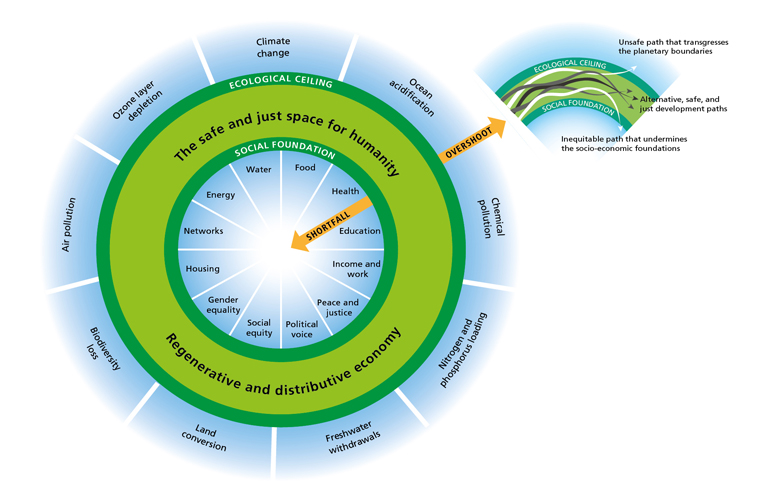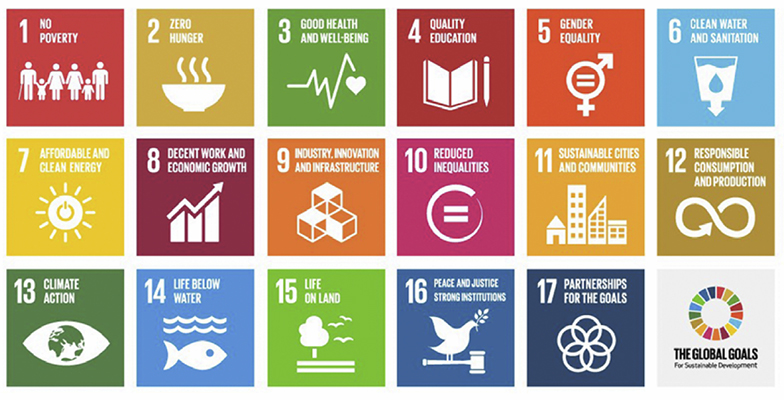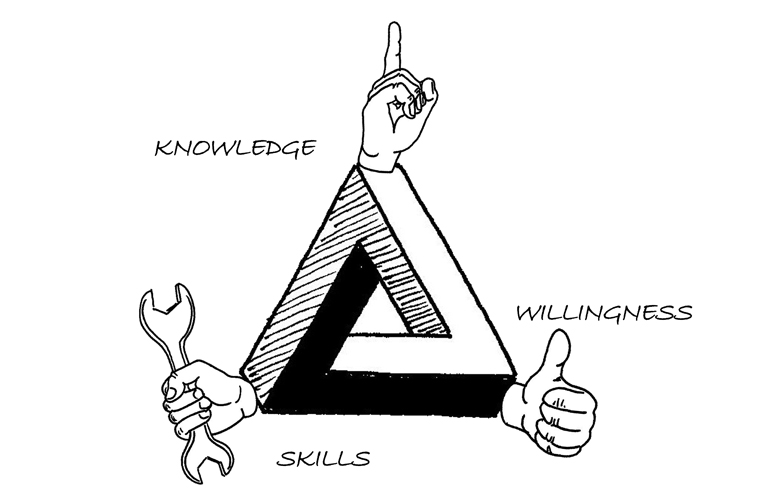Framework
The following models, goals, and concepts comprise the framework for Education for Sustainable Development. You can find more detailed explanations on the models in the “In-depth module 1” of the guidelines, "Integrating Sustainable Development into higher education".
What is the University of Bern’s understanding of Sustainable Development?

Three-dimensional concepts are based on the United Nations’ understanding of Sustainable Development (graphic on the left). The weighting of these sustainability dimensions does not always have to be the same, as shown in the variation on this concept by a group of Swiss environmental education organizations (Fachkonferenz Umweltbildung 2010, right). The pursuit of sustainable development is in essence a constant negotiation of compromises – or trade-offs – between competing dimensions. Three-dimensional models of sustainable development are easy to communicate and therefore widespread. But in a university context they may give the impression that important aspects such as culture, technology, health, etc. have been forgotten. It is therefore important to make these components – which are implicit but not mentioned – explicit when working with the models.
What has my subject got to do with Sustainable Development?

The "Doughnut Model" (pictured above) offers a possible entry point in the search for links between different subjects and Sustainable Development. It takes up concrete international debates and key topics of sustainable or non-sustainable development. The Doughnut Model portrays an environmentally safe and socially just area of sustainable economic development.

Which sustainability goals can be pursued?
The year 2015 will go down in history as the year the course was set for Sustainable Development. It is the year in which the world community agreed on an action plan for development financing (Addis Abeba), signed a catalogue of 17 Sustainable Development Goals (New York), and set forth climate goals (Paris). When it comes to implementing the goals, equal demands are placed on politics, science, society, and business. The task of science is primarily to contribute knowledge and methods. For example, how do society, the environment, and the economy “work”? Where is compromise necessary; where can synergies and room for action be found? How can impacts be reliably measured?

What competences do we need?
In order to actively participate in society’s transformation towards sustainable development, students need more than just knowledge and skills – they also need a corresponding stance (as reflected in their attitudes and values) and willingness to change (Schubiger 2013). While competences in the field of knowledge and skills can be formulated as learning outcomes, built up, and examined, courses can only provide a stimulus or nudge in attitudes or values – as these manifest themselves in willingness visible in actions only outside or after university.
